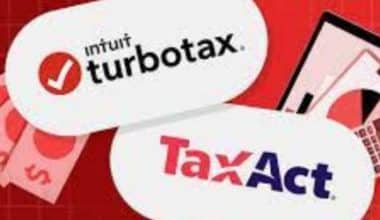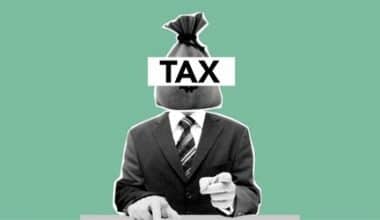The effective tax rate is the effective rate applied to your taxable income for your corporations. You are a taxpayer. In and of itself, that shouldn’t be shocking. (If this is the case, we regret the directness of our delivery of the bad news. A lawyer and an accountant are two people you should consult straight away, though. The tax burden is a more complex issue. However, there are many tiers to the American tax system. There are tiers of taxation for various categories of income and deductions that can significantly alter a person’s tax liability across tens of thousands of permutations. The end effect is that every wage earner has a gap between their theoretical tax payment and the amount they actually send to the IRS. In this article, we will discuss the effective tax rate formula and the average tax rate.
What Is Effective Tax Rate?
The term “effective tax rate” refers to the typical rate of taxation experienced by corporations or an individual. An individual’s effective tax rate is the average rate at which all of his or her taxable income is taxed.
It is believed that the effective tax rate brackets in the United States are more favorable for 95% of persons since they take into account the taxpayers’ every last dollar of income.
The marginal tax rate, on the other hand, may be more manageable for those in higher tax bands.
An effective tax rate is one metric that investors can use to gauge a company’s profitability, thus familiarity with the idea is crucial. However, in a progressive tax scheme, the rate may change drastically from year to year as different levels of taxable income are taxed at different rates. Without such context, it’s hard to determine what led to an unexpected increase or decrease in the tax rate.
A company’s tax rate may decrease, for instance, if it alters its asset accounting in order to pay less in taxes. However, the tax rate is a reasonable representation of the total tax levy.
How Does the Effective Tax Rate Work?
The average amount of taxes you owe as a percentage of your taxable income is known as your effective tax rate. Your effective tax rate is the mean of all the tax rates applied to your income by the IRS. Knowing the tax brackets used by the IRS is the first step in calculating your effective rate.
However, if you are single and make $60,000 in the 2020 tax year, you will be in the 22% marginal tax rate, but you will not actually pay 22% of your income in taxes. Just the excess over $41,775 ($18,225) would be subject to the 22% tax rate.
To calculate your effective tax rate, divide your entire tax bill by your total income. Because two taxpayers in the same bracket may have different effective tax rates, calculating the effective tax can be a challenge.
What Is an Example of an Effective Tax Rate?
Let’s assume that in the year 2022, a person’s income was $50,000. This is how they might figure their taxes in 2023:
- $0 – $10,275 at 10% = $10,275 of income taxed at 10% = $1,027.50
- $10,275 – $41,775 at 12% = $31,500 of income taxed at 12% = $3,780
- $41,775 – $50,000 at 22% = $8,225 of income taxed at 22% = $1,809.50
- Total taxes = $6,617
It’s important to keep in mind that changing tax brackets does not impact the tax treatment of any income below the new level. This tax plan combines features of both flat and progressive tax structures. On the first $10,275 of income, taxpayers in the United States pay the same rate, regardless of whether they make $50,000 or $50 million.
Because of the tax bracket system, the effective tax rate is a more accurate reflection of an individual’s true tax obligation. Since the highest tax bracket only applies to the wealthiest portion of an individual’s income, the top marginal tax rate is misleading.
For instance, if the marginal tax rate is 22% and a person makes $50,000, it does not necessarily follow that the individual will pay 22% of their income in taxes. In truth, he paid less than half that amount, although the figure would have been $11,000 if rounded up. This person’s effective tax rate was 13.2%, the percentage of his income that he actually paid in taxes because his income was taxed at different rates depending on its source.
Effective Tax Rate Formula
To calculate a company’s effective tax rate, divide its tax bill by its profit before taxes. In order to calculate an individual’s effective tax rate, we must divide their tax bill by their taxable income.
U.S. citizens and residents can calculate their “Total Tax” and “Taxable Income” using Form 1040. The form determines an individual’s total taxable income and an estimated amount of tax due or refunded. This document is necessary for filing an individual’s federal income tax return.
Here is the formula for the effective tax rate for corporations and individuals:
Effective Tax Rate for Corporations= Total Tax Expenses/ Earnings Before Taxes
Effective Tax Rate for Individual= Total Tax Expenses/ Taxable Income.
How Do I Calculate My Effective Tax Rate?
Let’s break down the process that people and corporations with an effective tax rate use to determine their annual tax due, a key indicator of cash flow and tax planning.
- Total the person’s expenses using information from their tax return
- It is therefore necessary to determine the individual’s taxable income. It’s calculated by taking the individual’s gross income and deducting their total exemptions and deductions. Calculate your taxable income by subtracting your exemptions and deductions from your gross income.
- The effective tax rate is calculated by dividing the individual’s total tax expense by their taxable income.
Following these procedures will yield the formula for a corporation:
- Total expenses can be found in a portion of the income statement directly above the net income line, so that’s where we’ll start.
- When completing an income statement, the next step is to determine and report the company’s net profit. Adding the total tax bill to the net profit yields the EBT. Hence, Earnings Before Taxes = Income After Taxes
- The effective tax rate of corporations is determined by dividing their total tax expense by their EBT.
Tax rate Corporation = Total tax expense / (Net income + Total tax expense).
What is the Difference Between the Effective and Marginal Tax Rates?
Taxpayers can use marginal and effective tax rates to calculate their tax liability based on their income and tax bracket.
- Effective tax rate. A taxpayer’s effective tax rate is the percentage of their yearly income that will go toward taxes.
- Marginal Tax Rate. The tax rate is this percentage of a person’s income after the first. Our tax system is progressive, meaning that as your income increases, so does the percentage of your income subject to taxation at the next tax band. If you’re paying your taxes in 2022, you’ll fall into one of seven different tax brackets, ranging in percentage from 10% to 37%. Once your standard deduction and/or itemized deductions have been taken from your gross annual income, that is where you fall for the purposes of calculating your marginal tax rate. Generally, a greater marginal tax rate is typical at higher income levels.
The percentage of a taxpayer’s yearly income that goes toward paying taxes is known as the average tax rate (sometimes called the effective tax rate). The marginal tax rate, on the other hand, is the rate at which a taxpayer is subject to taxation on their “last dollar of income.”
Furthermore, with a taxable income of $24,750, a single taxpayer would pay 10% in taxes up to $10,275, and then pay 12% in taxes on the remaining $14,475 since some of the income is in the 12% bracket. Since the final dollar of income is subject to taxation at the top rate of 12 percent, this would be the marginal tax rate. The marginal tax rate is the highest rate a taxpayer pays, while the average tax rate is substantially lower. Also, read Marginal Cost: Meaning, Formulas & How to Calculate, Simplified!
How Do I Lower My Effective Tax Rate?
Individuals and business owners alike frequently ask financial planners about tax reduction strategies. Even though the Tax Cuts and Jobs Act (TCJA) eliminated several other itemized deductions and personal exemptions, many taxpayers benefited from the law’s higher basic deductions.
We’ll go through some strategies that can help you bring your taxable income down even more.
#1. Plans Offered by Employers
Those who are eligible to participate in a 401(k) or 403(b) through their workplace can save up to $22,500 before taxes in 2023.
The maximum on pretax contributions for those 50 and older is increased by $7,500 in 2023 for “catch-up” contributions. Payroll deferrals make it possible to save money in an employer-sponsored retirement plan before taxes are taken out of the paycheck.
Simply put, the employee’s pre-tax income is decreased by the amount of the contribution for the current tax year.
#2. Individual Retirement Accounts (IRAs)
Traditional individual retirement accounts (IRAs) are another option for people to put money down for their future. In 2023, the yearly IRA contribution limit is $6,500. Those who are 50 or older can take advantage of the catch-up provision and contribute an extra $1,000.
Traditional IRA contributions may lower taxes in the year of the contribution. However, unlike employer-sponsored plan contributions, IRA contributions are made with after-tax cash, which means that income taxes have already been deducted from the amount contributed.
A typical IRA contribution may be fully or partially tax deductible for taxpayers (or their spouses) who participate in an employer-sponsored retirement plan. The IRS has rules that determine who is eligible for a deduction and how much they can claim.
New regulations altered the age limit for making contributions. Contributions to regular IRAs were ineligible for taxpayers beyond the age of 7012 in 2019 and earlier years. The end date is now 2020 rather than 2025. Contributions up to $7,500 per year in 2023 will be fully tax deductible for taxpayers above the age of 70.
#3. Put Away Money for Retirement
Maximizing retirement savings is one of the simplest strategies to lower taxable income. There are several options for retirement savings accounts, but two of the most popular are described below because of the tax benefits they provide in the year contributions are made.
#4. Inquire About Flexible Spending Accounts
Money can be set aside pretax in a flexible spending account by some employers, which can then be used for things like medical costs.
Saving money in a tax-deferred flexible spending account (FSA) that is administered by an employer is a great method to stretch your paycheck further. In 2023, an employee’s maximum contribution is $3,050.
The plan’s “use it or lose it” condition means participants lose any excess cash at the end of the year. Employers are allowed some leeway in the form of a grace period or carryover option for their participating staff. With the carryover provision, an employee can roll over up to $610 into the 2023 plan year.
If an employee chooses the grace period, they have until 2.5 months after the plan year ends to spend any remaining funds; however, they cannot be carried over to the next year. Employers can provide one or the other, but not both.
What Is the Difference Between Tax Rate and Effective Tax Rate?
Individuals’ or corporations’ effective tax rate can be defined as the percentage of their income that goes toward paying taxes. Earned income, such as wages, and unearned income, such as stock dividends, are both subject to taxation, but at different rates. This results in an effective tax rate for individuals. When comparing the statutory tax rate with the effective tax rate, remember that the former refers to the average rate at which a company’s pre-tax profits are taxed, and the latter to the legal percentage set by law.
If you have a copy of your Form 1040 handy, you may determine your effective tax rate by dividing your total tax from Line 16 by your taxable income from Line 11(b).
Average Tax Rate
When a person adds together all of their taxable income and divides it by how much tax they actually owe, the result is their average tax rate. The effective tax rate is another name for this concept. To determine an individual’s average tax rate, they need only divide their tax obligation by their taxable income. At all times, the marginal tax rate will be higher than the average tax rate. The average income tax rate does not include state and local levies, sales taxes, or property taxes. Its primary function is to help people evaluate potential monetary gains or losses.
Importance of Average Tax Rate
Investors use the average tax rate as a measure of a company’s profitability. This figure may change in the future. It is not always clear what factors result in a reduced tax rate. For instance, rather than investing in additional enhancements, the corporation can take steps to lower its tax liability. There are two types of financial statements that businesses use. One is used for filing tax returns and the other is utilized for reporting financial information. These two documents do not necessarily reflect the actual tax costs.
Conclusion
In conclusion, to calculate your effective tax rate, take your total tax liability and divide it by your taxable income. The IRS establishes and updates these brackets annually. Calculating your effective tax rate is as simple as dividing your Form 1040 tax bill by your taxable income. To get a company’s effective tax rate, take the overall tax burden and divide it by pre-interest profits. Always seek the advice of a qualified tax counselor or professional if you have questions regarding your taxes.
Effective Tax Rate FAQs
How Does Turbotax Calculate Effective Tax Rate?
The “effective tax rate” is the average rate at which federal taxes must be paid out of taxable income. Simply divide your tax debt by your total taxable income to get your effective tax rate.
How Do Tax Brackets Differ by Filers?
Due to the disparity in tax brackets, partners filing jointly will have a different effective tax rate than single filers. The Internal Revenue Service (IRS) has the discretion to adjust tax brackets for individuals and families in subsequent years.
Similar Articles
- Total Cost Formula: Ultimate Guide on How to Calculate the Total & Average Loan Cost
- PERSONAL FINANCE STATEMENT: 2023 Templates & Examples (All You Need)
- TAXABLE INCOME: Definition, Examples & Calculations
- OREGON INCOME TAX: All You Should Know






